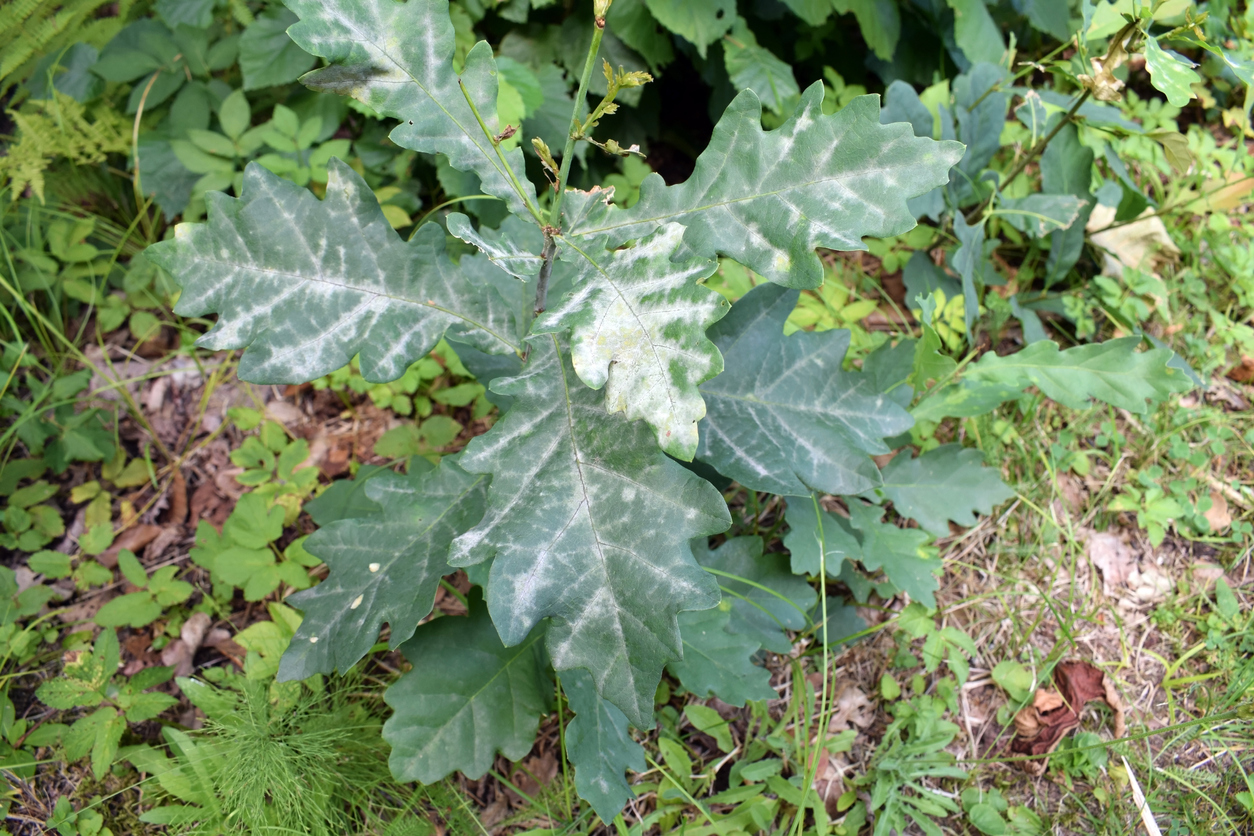Vegetables: Pest and disease management is a must for a productive, edible garden.

Powdery mildew disease on oak tree caused by Erysiphe alphitoides (Microsphaera alphitoides) fungus Image: iStcok
December onwards is prime time for pests, and fungus diseases, in the vegetable garden. The combination of heat, rain and humidity creates the perfect conditions for them.
The trouble with pests is that they don’t go away if we ignore them. Instead, they multiply at a breath-taking rate. Before you know it, tomatoes are caterpillar infested, or riddled with white fly. Red spider mite has infested the leaves of brinjals and beans, and a white, powdery mildew covers the leaves of baby marrows.
Pest and disease management is an absolute must for a productive edible garden. That doesn’t mean resorting to poisons. There are organic pesticides and fungicides that are safe to use, with no harmful side-effects for humans or animals.
The organic pesticides, like Ludwig’s Insect Spray, rely mainly on oil to smother, garlic to repel, and natural pyrethrum to kill small bodies insects like aphids. There are also biological controls for caterpillars that stop them from feeding.
Likewise, an organic fungicide like the Margaret Roberts organic fungicide utilises organic plant acid to weaken the fungus, making it more susceptible to the elements.
At this time of the year, keep an active look out for pests. Inspect the leaves of plants regularly, with a closer look if they appear unhealthy or yellowing. Check tomato fruit for any signs of caterpillars – especially their droppings.
White fly
This pest spreads viruses and sucks the sap out of leaves and stems, which deforms and stunts
the plant, affecting its yield. A simple remedy is to spray with Ludwig’s Insect Spray or Margaret Roberts Organic Insecticide (canola oil and garlic) three
times within 10 days and after that once a week for the following month. This programme will also control aphids.
African bollworm and loopers:
These caterpillars penetrate the fruit, hollowing out the flesh, mainly tomatoes. Use Ludwig’s Insect Spray or a biological control like Margaret Roberts Biological Caterpillar insecticide, a contact spray which should be applied when the caterpillars are active, usually in the evening. The bacteria in the spray gets into the gut of the caterpillar and it stops feeding, eventually dying.
Red spide mite
This pest is most active in hot and dry conditions and can affect a wide range of vegetables including brinjals, peppers, tomatoes, squash, and beans. W h e n
l e a v e s start to look speckled, blotchy or an unhealthy yellow, it is a sure sign of red spider. The red mites live on the underside of the leaf and appear as tiny black or red moving specks. They such the sap out of the leaves, which eventually die and fall off. T h o r o u g h l y drench the underside of the leaves with Ludwig’s Insect Spray. The canola oil in the spray will smother them and the pyrethrum will kill them. Spray once a week for at least two weeks.
Powdery Mildew
This fungus disease is almost inevitable, because the spores are airborne, which makes it hard to prevent. It mainly affects squashes, cucumber, and melons. Spacing
plants well apart and not wetting the leaves when watering may help to prevent it. Margaret Roberts Organic Fungicide is a broad-spectrum organic fungicide/bactericide solution that should be sprayed weekly when conditions are hot, wet, and humid. Activated ascorbic acid is its main ingredient.
Blight
Late blight on tomatoes occurs at the beginning of summer, when the fungus is triggered by cool, wet nights and warm days. Pale green spots appear on the leaves and the fruit becomes blemished. Spray preventatively with Margaret Roberts Organic fungicide, once a week. Once plants are severely infected it is better to pull them out and throw them away (not on the compost)
The organic Ludwig’s Insect Spray and Margaret Roberts Organic Fungicide are compatible and can be used together in a spray to prevent whitefly, aphids, and other sucking insects as well as fungus disease. Apply the spray cocktail weekly.
What to sow in December?
There is still time to sow all summer veggies, but for long crops, like sweet corn, brinjals, tomatoes and peppers, it is best to sow as soon as possible.
For more news your way, download The Citizen’s app for iOS and Android.
Download our app




